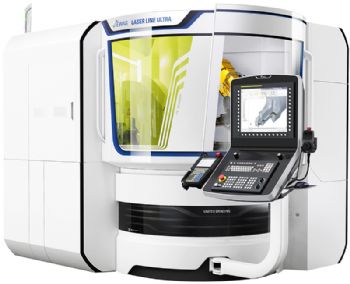
As users in the electronics, medical and micro-mechanics industries, for example, continue to push the boundaries in terms of miniature products, Ewag — a member of the United Grinding Group with a UK subsidiary in Warwick (
www.walter-machines.com) — has likewise continually developed its laser-based machining technology to meet these demands.
Indeed, the company’s Laser Line Ultra machining centre can produce spiral tools from 0.4 to 3mm in diameter and made from hard/ultra-hard materials such as tungsten carbide, poly-crystalline diamond (PCD), chemical vapour deposition diamond (CVD-D) and cubic boron nitride (CBN).
The machine can also be applied to cutting edge preparation, post-sharpening, chip-breaker and cylindrical ‘margin’ fabrication — plus the laser-modification of ground cutting tools.
Furthermore, its eight-axis kinematic concept and the use of an industrial laser source that emits pulses in pico-seconds allows complex micro geometries to be machined (the pulse is so short that there is insufficient time for a significant amount of heat to be absorbed by the cutting tool, so there is negligible heat-affected zone).
For example, a four-flute PCD end mill can be produced from a cylindrical blank and have its primary and secondary clearance faces machined both at the tip and at the circumference.
In addition, the corners at the edges are protected by a chamfer; and as with all ‘lasered’ spiral tools, the result is a smooth and uninterrupted interface between PCD and tungsten carbide.
Moreover, carbide drill bits that have been laser-fabricated by the machine can subsequently be PVD coated with a single layer of TiAlN or AlTiN alloy (the coating process is the same as that applied to ground cutting tools).
In terms of micro drills, for instance, the advantages of using laser technology compared to conventional techniques include: diameter-to-length ratios up to 1:20; the ability to process additional small features such as tip thinning and tip chamfers; the elimination of tool breakage and the need for a steady rest because ‘lasering’ is a force-free process; and a high degree of geometrical flexibility, since brazed plate-based tools and spiral tools can be fabricated without re-tooling.